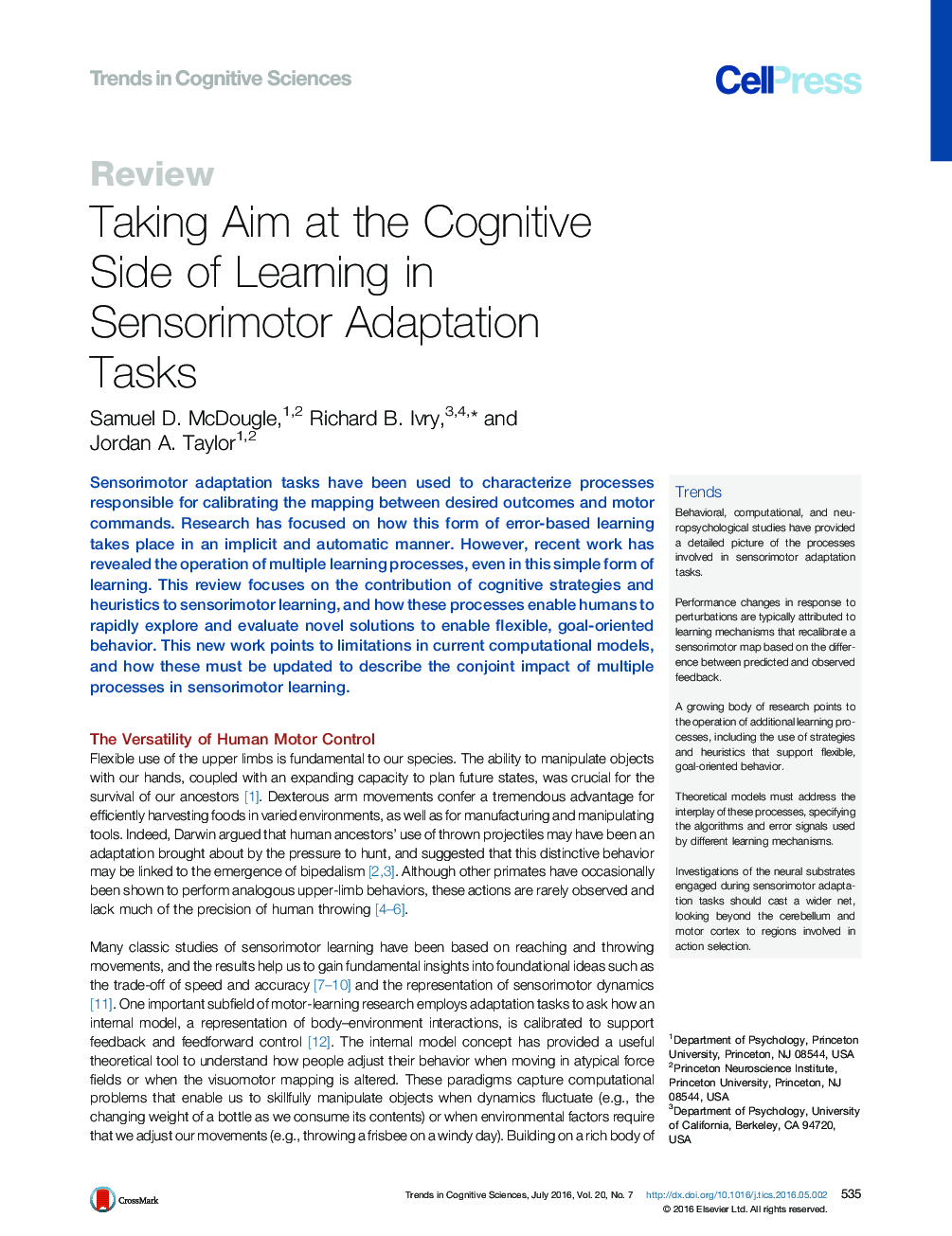| کد مقاله | کد نشریه | سال انتشار | مقاله انگلیسی | نسخه تمام متن |
|---|---|---|---|---|
| 141355 | 162858 | 2016 | 10 صفحه PDF | دانلود رایگان |
Sensorimotor adaptation tasks have been used to characterize processes responsible for calibrating the mapping between desired outcomes and motor commands. Research has focused on how this form of error-based learning takes place in an implicit and automatic manner. However, recent work has revealed the operation of multiple learning processes, even in this simple form of learning. This review focuses on the contribution of cognitive strategies and heuristics to sensorimotor learning, and how these processes enable humans to rapidly explore and evaluate novel solutions to enable flexible, goal-oriented behavior. This new work points to limitations in current computational models, and how these must be updated to describe the conjoint impact of multiple processes in sensorimotor learning.
TrendsBehavioral, computational, and neuropsychological studies have provided a detailed picture of the processes involved in sensorimotor adaptation tasks.Performance changes in response to perturbations are typically attributed to learning mechanisms that recalibrate a sensorimotor map based on the difference between predicted and observed feedback.A growing body of research points to the operation of additional learning processes, including the use of strategies and heuristics that support flexible, goal-oriented behavior.Theoretical models must address the interplay of these processes, specifying the algorithms and error signals used by different learning mechanisms.Investigations of the neural substrates engaged during sensorimotor adaptation tasks should cast a wider net, looking beyond the cerebellum and motor cortex to regions involved in action selection.
Journal: - Volume 20, Issue 7, July 2016, Pages 535–544
